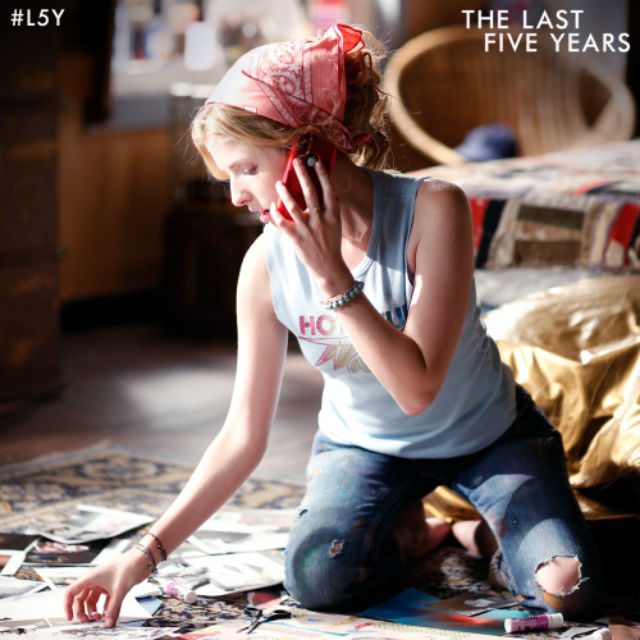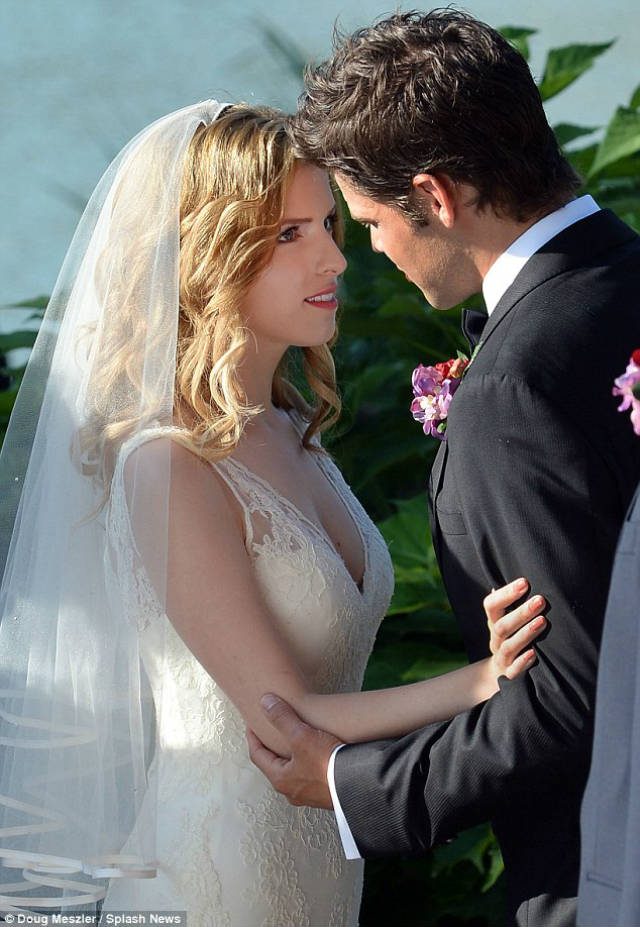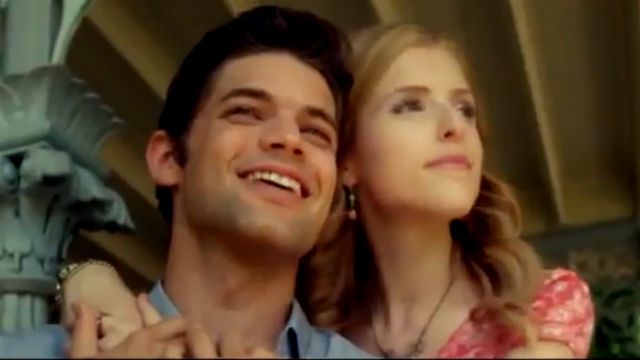SUMMARY
This is AI generated summarization, which may have errors. For context, always refer to the full article.

We first see Cathy (Anna Kendrick) in misery, singing about she’s still hurting now that Jamie, her husband of so many years, is gone, and has “decided it’s time to move on” with his “new dreams he’s building upon.”
Jamie (Jeremy Jordan) first appears in absolute ecstasy, belting about how’s he’s absolutely in love with Cathy, his “Shiksa Goddess.”
Richard LaGravanese’s screen adaptation of Jason Robert Brown’s off-Broadway hit The Last 5 Years is faithful to the core. The musical’s conceit is that it tells the story of a hopeless marriage from two perspectives. (READ: Where did it all go? Love’s ups and downs in The Last Five Years)
The wife’s perspective is told backwards, from the sorrowful separation back to the gleeful first date. The husband’s perspective, on the other hand, is told from his blissful declarations of love up to his eventual decision to leave the girl he once was so in love with. Their stories eventually meet in the middle, albeit absent the spark of what should have been a romantic reunion.

Scenes from a marriage
The relationship woes of Cathy and Jamie are rooted firmly on their blatant incompatibility. He’s a successful writer. She’s a failing actress. He’s confident and outgoing. She’s brooding and insecure.
There are no grand gestures on love and its painful failures. There aren’t even any statements on the fallacies of marriage and its promises of happily-ever-afters. The Last Five Years is plainly a look into the very specific conflicts of a romantic relationship with tenuous similarities with those that exist in the real world.
This is not Ingmar Bergman’s Scenes From a Marriage (1973), a more muted and less melodic chamber piece that also tackles a married couple’s journey to divorce. This isn’t even on the level of Woody Allen’s Husbands and Wives (1992), also set in New York City but with two couples experiencing the growing fissures in their marriages.
The Last Five Years doesn’t have the immense emotional heft of Richard Linklater’s famous Before films (1995-2013), where in a span of 18 years and three individually memorable movies, he navigates a couple’s history from fatedly meeting on a train to Vienna to nearly falling out of love beside the ruins of Greece.
Brown’s work is heavily reliant on the singsong treatment of heartache and the intertwining timelines of the husband and wife’s perspective on the same story. Beyond the attempt at novelty and sweet melodies, there is really not much here to hold on to, except mainstream melancholy.

Uneven
The Last Five Years is an hour and a half duet that is unever in both mood and quality. The film consistently seesaws between happy and sad, never really sustaining a traditional emotional arc for what really is a very simplistic and predictable narrative. After a few cycles of the sentimental roller coaster, the film eventually gets repetitive and taxing, with its rewards becoming fainter and fainter.
There are a number of indelible lines. However, for every heartfelt “I will not fail so you can be comfortable, Cathy. I will not lose because you can’t win,” there are also totally generic cringe-worthy rhymes “You don’t have to learn to tango. You don’t have to eat prosciutto.”
Every verse is set into melodies that sound generic within the show tune scheme of things. The songs’ highs are belted out for affect and urgency. Their lows are all suited for quick wit and humor. The formula would probably work inside a theater with the actor and actress bearing their talents and their souls to the audience. As a film however, the songs feel rather soulless, anchored mainly on the performances of the two leads.
A beautiful mess
Kendrick’s Cathy is a beautiful mess. Kendrick, who has often played, whether it be in musical films or not, the chirpy and often annoying sprite, is wonderfully subdued here when it matters. She sings without the unnecessary extravagance but does so with a fervent connection to the pain and the tragedy. She hymns all her lines, with attention to even the subtlest feelings.
LaGravanese has trouble making sense out of the intricacies of Brown’s narrative conceit. The film suffers from its inability to keep track of the timelines, making it rather disorienting at first until that point where following the separate stories becomes a needless endeavor.
LaGravanese also attempts to sustain a glossy look for the film without sacrificing the requisite grit that would enunciate its characters’ heartaches. New York City’s pleasant outdoors is exhibited here without hardly any hesitations, perhaps to emphasize the dreary shadows of what’s inside the city’s brownstone apartments, where most of the film’s sadder moments happen.
The Last Five Years is all too pretty, all too fleeting to be taken seriously. Brown might have mustered enough ambition and conviction to stray away from being ordinary and straightforward within the musical theater setting.
However, LaGravanese’s inability to add anything new to the material, which is perhaps due to his being stubbornly enamoured by both its conceit and gossamer depth, only reveals much of its innate weaknesses. – Rappler.com
 Francis Joseph Cruz litigates for a living and writes about cinema for fun. The first Filipino movie he saw in the theaters was Carlo J. Caparas’ ‘Tirad Pass.’ Since then, he’s been on a mission to find better memories with Philippine cinema. Profile photo by Fatcat Studios
Francis Joseph Cruz litigates for a living and writes about cinema for fun. The first Filipino movie he saw in the theaters was Carlo J. Caparas’ ‘Tirad Pass.’ Since then, he’s been on a mission to find better memories with Philippine cinema. Profile photo by Fatcat Studios
Add a comment
How does this make you feel?
There are no comments yet. Add your comment to start the conversation.